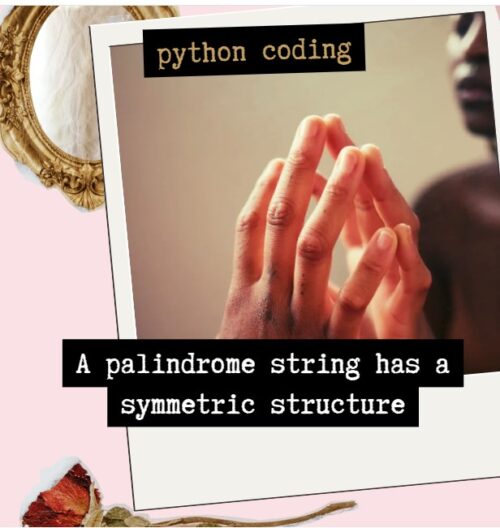How to identify string Palindrome. A palindrome is a word, phrase, number, or other sequence of characters that reads the same backward as forward something like object kept in front of mirror. In other words, it remains the same even when its characters are reversed. Palindromes are often used in literature and wordplay, and they are commonly used to test or demonstrate programming skills.
Understanding Palindromes: Exploring Strings That Mirror Themselves.
Properties of Palindromes
- Symmetry: Palindromes exhibit symmetry along their central point. When divided into halves, the characters on one side mirror the characters on the other side.
- Case and Space Insensitivity: Palindromes are often evaluated without considering letter cases and spaces. For example, “Racecar” and “Race car” are both palindromes.
How to Identify Palindromes
Identifying palindromes involves comparing a string with its reverse to determine if they are the same. The process usually includes the following steps:
- Remove Spaces and Special Characters: Palindrome detection commonly involves removing spaces, punctuation, and other special characters to focus solely on alphanumeric characters.
- Convert to Lowercase: Normalizing the case by converting all characters to lowercase ensures a case-insensitive comparison.
- Reverse the String: Reversing the string allows for easy comparison with the original string.
- Comparison: Compare the original string with its reverse. If they match, the given string is a palindrome.
Here are five examples of string palindromes:
- “radar”: Read backward, it still spells “radar.”
- “level”: Reversing the letters results in the same word, “level.”
- “madam”: This word remains unchanged when read in reverse, spelling “madam” again.
- “racecar”: It reads the same from left to right and right to left.
- “A man, a plan, a canal, Panama!”: This is a multi-word palindrome, which remains the same even when spaces and punctuation are ignored and case is normalized.
- “No lemon, no melon”: Demonstrates symmetry and case insensitivity.
Now, let’s write a Python function to check if a given string is a palindrome:
def is_palindrome(s):
# Remove spaces and convert to lowercase for case-insensitive comparison s = ''.join(e for e in s if e.isalnum()).lower() # Compare the original string with its reverse return s == s[::-1]
s = ''.join(e for e in s if e.isalnum()).lower()
return s == s[::-1]
input_string = input("Enter a string: ")
if is_palindrome(input_string):
Print("Is palindrome")
else:
print("It is not Palindrome:) Conclusion
Palindromes, with their intriguing properties and versatility, continue to captivate language enthusiasts and programmers. Whether you’re deciphering word puzzles or developing algorithms, understanding palindromes opens a door to the creative and logical aspects of language. By employing simple techniques and programming skills, exploring palindromes becomes an engaging endeavor, showcasing the beauty of linguistic symmetry in the digital realm.
